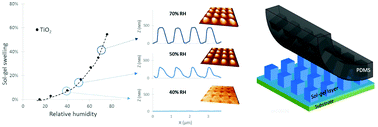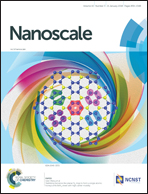Environment-controlled sol–gel soft-NIL processing for optimized titania, alumina, silica and yttria-zirconia imprinting at sub-micron dimensions
Abstract
Metal oxide (MOX) surface nanopatterns can be prepared using Soft-Nano-Imprint-Lithography (soft-NIL) combined with sol–gel deposition processing. Even if sol–gel layers remain gel-like straight after deposition, their accurate replication from a mould remains difficult as a result of the fast evaporation-induced stiffening that prevents efficient mass transfer underneath the soft mould. The present work reports a detailed investigation of the role of the xerogel layer conditioning (temperature and relative humidity) prior to imprinting and its influence on the quality of the replication. This study is performed on four different systems namely titania, alumina, silica and yttria-stabilised zirconia. We demonstrate that the quality of the replica can be considerably improved without the use of sacrificial stabilising organic agents, but by simply applying an optimal aging at controlled temperature and relative humidity specific to each different reported MOX. In each case this condition corresponds to swelling the initial xerogels of around 30%vol by water absorption from humidity. We show that this degree of swelling represents the best compromise for sufficiently increasing the xerogel fluidity while limiting the shrinkage upon final thermal curing.



 Please wait while we load your content...
Please wait while we load your content...